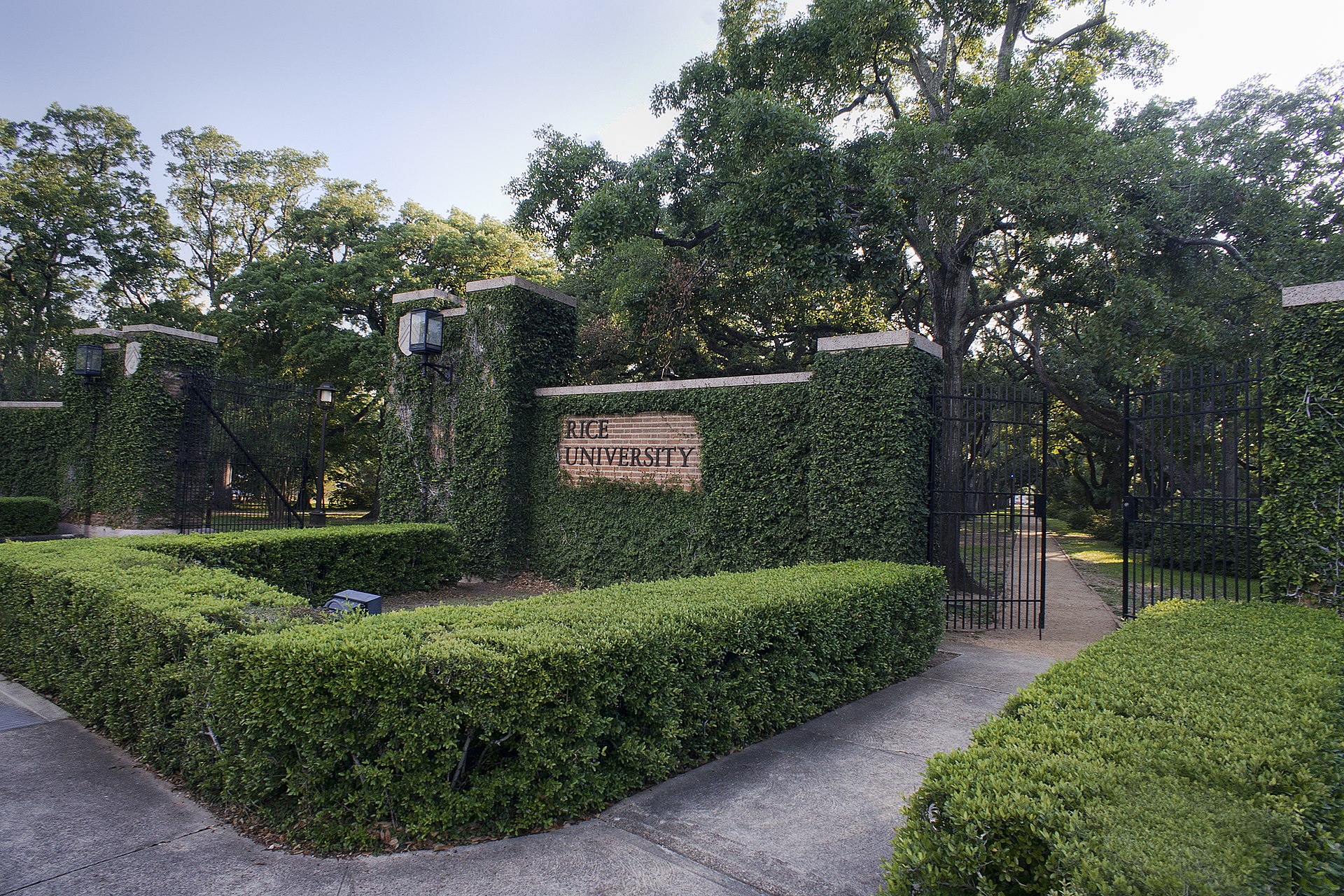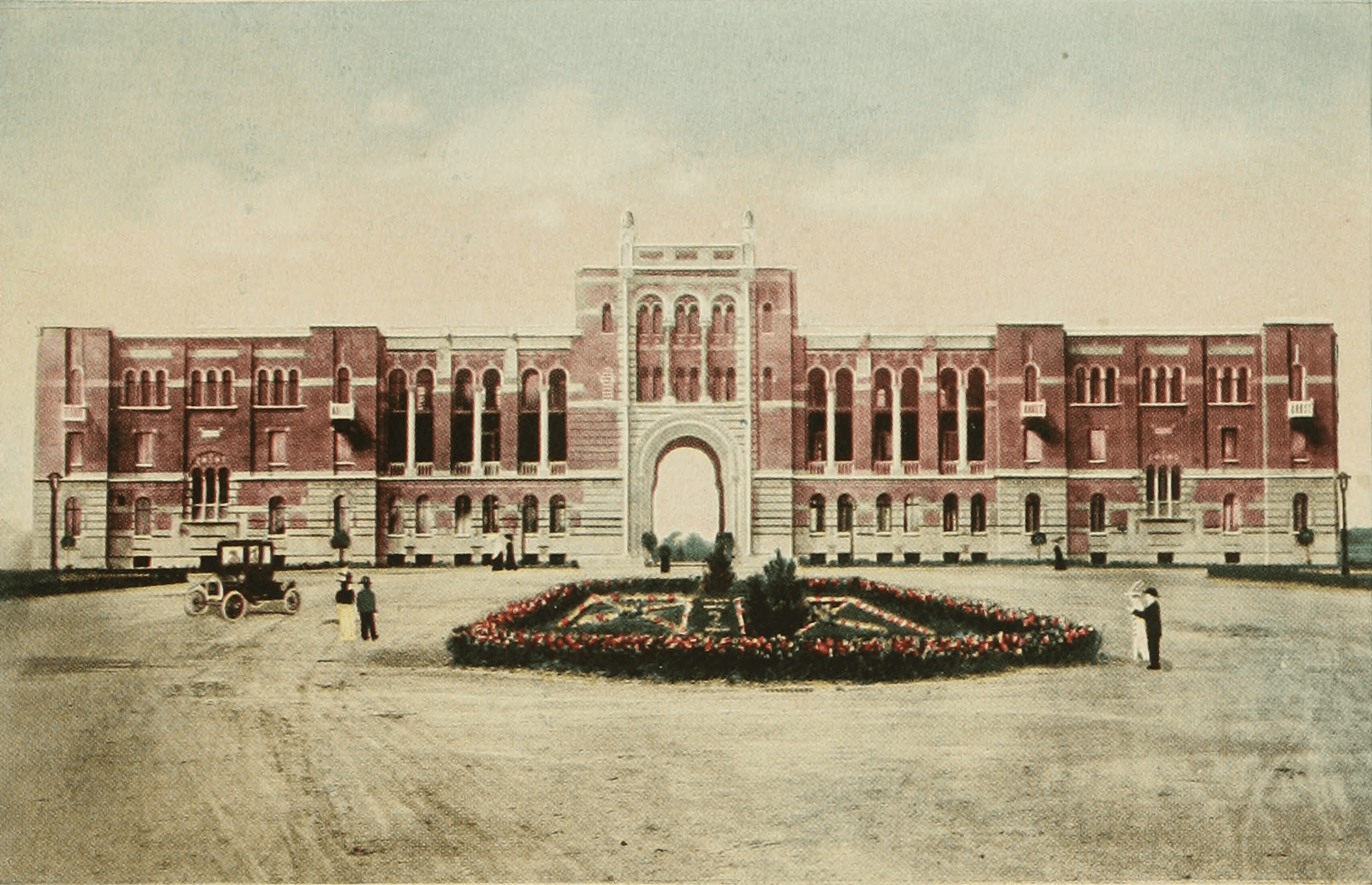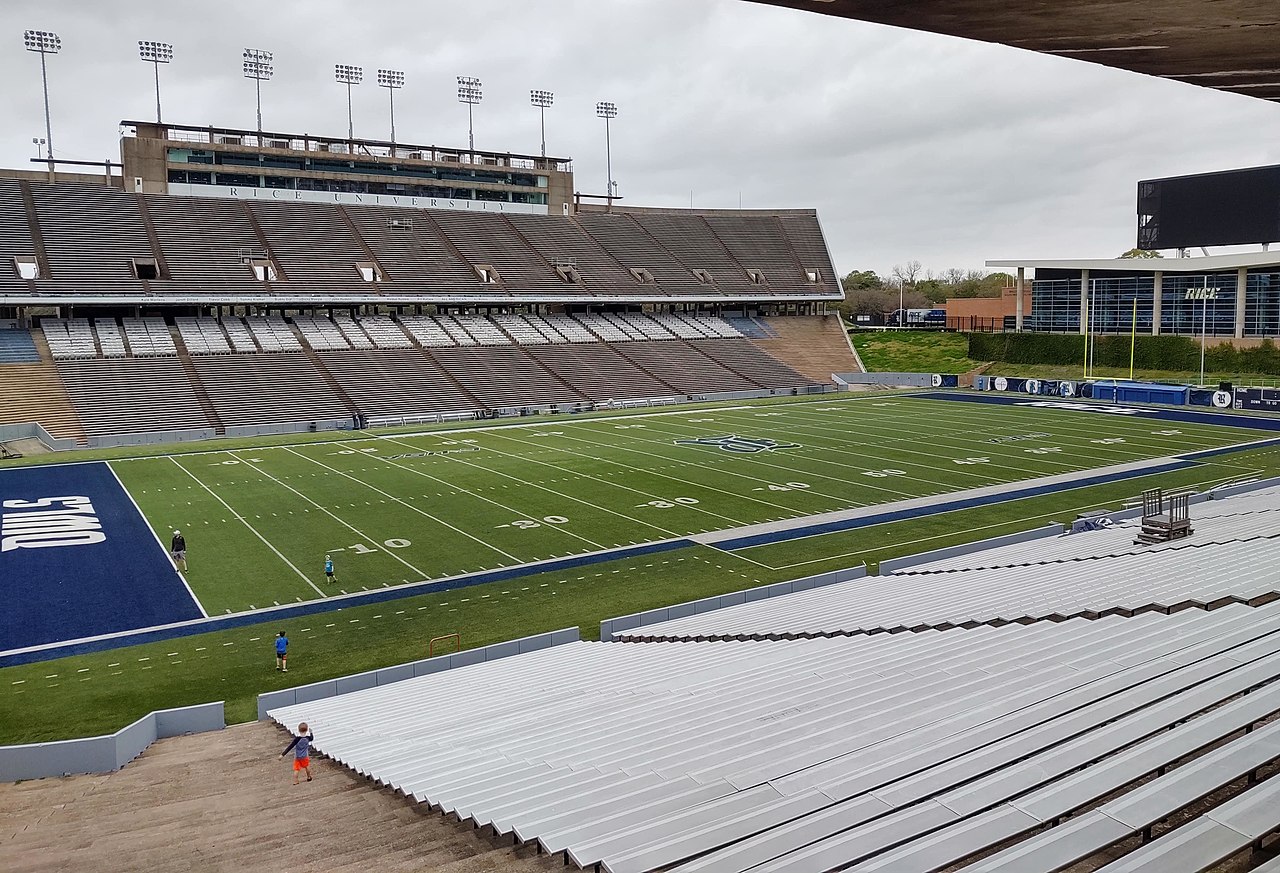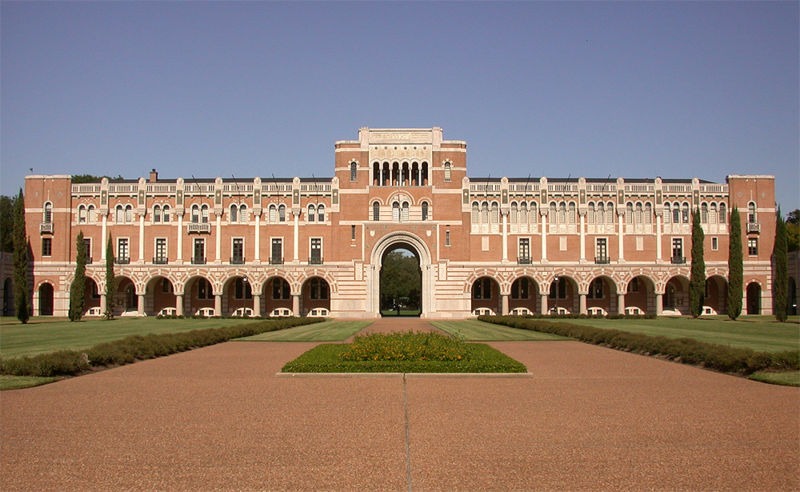Introduction
Rice University is a non-public educational establishment that was established in 1912. It has a total of 4,247 students enrolled in its undergraduate program. It is located in an urban area, and the total land area of the campus is 300 acres. It follows an academic calendar that is divided into semesters. The ranking of Rice University in the 2022-2023 edition of Best Colleges in National Universities is number 15, placing it in 15th place overall. The total amount of its tuition and fees might reach as high as $54,960.
Rice University’s History
- On May 19, 1891, in the state capital of Texas, the William M. Rice Institute for the Advancement of Literature, Science, and Art submitted its application for a state charter. In the institute’s first charter, it was written that there would be no tuition fees and that its purpose would be “the instruction and improvement of the white inhabitants of the City of Houston and the State of Texas.” The amount of $4.6 million that was bequeathed to establish the institute came from the estate of William Marsh Rice, a businessman who arrived in Texas in 1838 and soon after moved to the city of Houston, which was just being started at the time.
- During the 1840s and 1850s, he amassed his fortune by supplying plantation owners with goods and by selling cotton and sugar crops, all of which were generated in significant part by enslaved labor. During this time, he also sold cotton and sugar. Rice was also something they owned, and it profited from the labor they did. After the end of the Civil War, he took an oath of fidelity to the newly reestablished United States of America and settled down in New Jersey and New York, where he continued to keep a careful check on the many ongoing profitable ventures he was involved in within the state of Texas.
- Rice, who was childless, was murdered in New York City on September 23, 1900, by his butler and lawyer in an attempt to steal his inheritance. After a great deal of legal wrangling, Rice’s bequest in 1904 was finally used for the purpose he intended: the establishment of his eponymous institution in the rapidly expanding city of Houston. Following the selection of Edgar Odell Lovett, a mathematician from Princeton University, to serve as the first president of the institute, the trustees of the institute dispatched Lovett on a voyage around the world to find the most effective pedagogical practices, ideas, and personnel.
- The Rice Institute celebrated its debut with a three-day opening weekend in October 1912, during which distinguished speakers from all around the world gave talks. President Lovett announced that he and the other members of his administration intended “to assign no upper limit to its educational endeavor.” In its first year of operation, the institute had 77 male and female students as well as a faculty of approximately a dozen members. Under the direction of Lovett and James Addison Baker Jr., who chaired Rice’s Board of Trustees from 1891 to 1941, the institute soon grew in size and importance. By the time Lovett stood down from his position as president in 1946, the institute had become an integral element of a thriving metropolis with a population of more than 500,000 people.
- Rice Institute’s mission statement has always included a focus on graduate education; the institution’s first doctoral degree was granted in 1918. The institute went through a period of expansion in the 1950s under the leadership of President William Vermillion Houston, who held his position from 1946 to 1960 (during which time the residential college system and the annual Beer Bike competition both got their starts in 1957).
- The graduate programs expanded over time to cover not only the sciences and engineering but also the arts and social sciences. This expansion occurred in all academic disciplines. Rice Institute became William Marsh Rice University on July 1, 1960, when the name change took effect. Rice University’s celebration of its half-century anniversary was led by President Kenneth Sanborn Pitzer in 1962. During his tenure as president, which spanned from 1961 through 1968, President Pitzer strengthened the university’s dedication to research and oversaw the establishment of the School of Architecture in 1965.
- From the time it first opened its doors until the early 1960s, the university maintained a strict policy that barred Black students from enrolling. The trustees of Rice University were forced to desegregate the university and begin a legal process to remove racial barriers from its charter as a result of growing national pressure from financing and accrediting organizations, as well as the greater moral and political concerns of the civil rights movement. These pressures combined to make it impossible for the trustees to ignore.
- Raymond Lewis Johnson, a graduate student in mathematics, was the first person of African descent to be admitted to the university in 1964. Charles Edward Freeman III and Jacqueline Elizabeth McCauley were the first two Black students to enroll in an undergraduate program at the university in the fall of 1965. Following the enrollment of these first three students, a growing number of Black students enrolled at Rice University. These students added a new level of distinction to the institution, and they persisted in their efforts to gain complete acceptance from the rest of the Rice community. In the same year that Rice University implemented its first tuition fees, the university also kicked out a fundraising campaign to raise $33 million.
- Rice University made the most of the abundant financing opportunities for research that were available both during and after the Cold War. The Shepherd School of Music and the Jones Graduate School of Administration, which would later be renamed the Jones Graduate School of Business, were both established under President Norman Hackerman’s tenure as head of the university, which lasted from 1970 through 1985. The George R. Brown School of Engineering and the School of Natural Sciences, which is now known as the Wiess School of Natural Sciences, were both established in 1975 after the Division of Science and Engineering was split into two separate schools.
- 1979 marked the year that the Division of Humanities and Social Sciences split into its two independent schools. Rice University was invited to become a member of the Association of American Universities in 1985. This is a consortium of the most prestigious research universities in North America. During his tenure as president of Rice University, which spanned from 1985 to 1993, George Erik Rupp was instrumental in establishing several interdisciplinary centers.
- In 1996, Professors Robert F. Curl and Richard E. Smalley were awarded a share of the Nobel Prize in Chemistry for their work in the field of nanotechnology. Innovative faculty members forged into new domains such as these. Rice University has maintained its position as one of the nation’s top 20 research universities constantly as a direct result of these ongoing advancements.
- The university greatly increased its international character during the tenure of President S. Malcolm Gillis, which lasted from 1993 until 2004. This was accomplished by increasing the number of students who came from other countries and forming connections with universities located all over the world. At the same time, the institution continues to strengthen its commitment to Houston, the city in which it is located, by strengthening its partnerships with both the local business community and the Texas Medical Center. Every year, the Susanne M. Glasscock School of Continuing Studies welcomes thousands of Houston residents to the main campus to further their education as well as their personal and professional lives. Since its founding in 1993, the James A. Baker III Institute for Public Policy has been providing policymakers on both the local and national levels with crucial information on the most pressing issues of the day.
- Under the direction of President David W. Leebron from 2004 to 2022, the university continued to expand its local and global footprint during a period of tremendous growth, which was punctuated by the addition of new programs and facilities such as the Kinder Institute for Urban Research in 2010, the Boniuk Institute for Religious Tolerance in 2013, the Doerr Institute for New Leaders in 2015, the Moody Center for the Arts in 2017, and the Liu Idea Lab for Innovation and Entrepreneurship in 2018. This expansion occurred during a time when the university.
- The Rice Investment, a new financial aid policy that was introduced by the university in 2019, strengthens and broadens the institution’s continuous commitment to providing need-based scholarships to students from low- and middle-income families. Rice’s endowment has been able to keep up with the university’s rising enrollment as well as its expanding facilities and programs thanks to the generosity of countless individuals and foundations. Rice University’s first Black president, Reginald DesRoches, assumed office on July 1, 2022, at which time the university’s endowment, which had been valued at $10 million in 1913, had increased to $7.8 billion.
- Rice has been able to accommodate a growing number of students from a wide range of backgrounds because of the expansion of its academic resources. For autumn 2022, degree-seeking undergraduate students totaled 4,480, with 4,085 degree-seeking graduate students. 29 percent of the students in the Class of 2026 identified as Asian American at the time of enrollment. Students who self-identified as being of Hispanic or Latino descent made up 17% of that group, while students of African descent made up 8%.
- More than 60 different nations are represented among Rice University’s undergraduate and graduate student body, and that number continues to grow. The faculty of Rice University consists of 749 full-time professors and 147 adjunct professors. Even though it is currently in the middle of both a process for strategic planning and a fundraising effort to raise $2 billion, the university intends to keep expanding and advancing in the direction of a more daring future.
View this post on Instagram
Where is Rice University Located?
The main campus of Rice University can be found at 6100 Main Street in southwest central Houston. Rice University is located directly across Main Street from the Texas Medical Center. It is also near Reliant Park, downtown Houston, the Museum District, the Rice Village, and Hermann Park, which is home to the Houston Zoo, a golf course with 18 holes, and the Houston Museum of Natural Science.
The Hobby Airport is the one that is closest to the university, and it takes around half an hour to travel there under ideal traffic circumstances. The somewhat bigger George Bush Intercontinental Airport is located just under an hour’s drive away in most cases; however, during periods of heavy traffic, the trip may take significantly longer.
Shuttle bus service is offered to and from Bush Intercontinental Airport and Hobby Airport to the majority of the hotels located in the area surrounding Rice University. The cost of taking a cab from the airport to the university is roughly equivalent to that of using a shuttle bus, and the going rate for limousine service is approximately two times that of a taxi.
Guide to Getting into Rice University
- There is not just one response available to the topic of how one can enroll at Rice University. In addition to submitting the Rice application and the Rice supplemental essays, several other considerations go into deciding whether or not Rice University will grant you admission. You can improve your chances of getting into Rice University by maintaining great grades, getting high scores on the SAT or ACT, and participating in a wide variety of extracurricular activities. Therefore, if you are interested in learning how to enroll at Rice University, the most important thing you can do is get a head start on your preparations as soon as you possibly can.
- Rice University is ranked number 17 overall among National Universities and number 6 for having the Best Undergraduate Teaching Quality, according to U.S. News. This demonstrates that Rice is extremely well-regarded, and as a result, it has a great deal of popularity among students. Taking a look at the enrollment data of Rice University, we can see that its acceptance rate is approximately 9%. Those who apply to Rice’s Early Decision program have a greater acceptance rate of roughly 18% than those who don’t.
- The student population of Rice University demonstrates that the university is among the most competitive educational institutions. Therefore, it makes sense to apply for Rice University’s Early Decision program if you are certain that Rice University is the institution that is the best fit for you. While this does imply that the application deadline for Rice University will be moved up, it also means that your chances of being in will increase. Nevertheless, if you are approved, you are obligated to show up at the event. Therefore, if Rice is your number one school of choice, apply for Rice’s Early Decision program. You have a lot of work to do to meet the requirements for admission to Rice University by the time the application deadline comes around. In addition to preparing for your interview at Rice University, you need to create additional essays for Rice University well in advance. If your SAT score is lower than average, these aspects of your application will count significantly more in the admissions decision.
What is Rice University’s typical GPA?
Although having a high GPA will be to an applicant’s advantage, the requirements for GPA that Rice University seeks are not carved in stone. Rice University does not disclose a minimum or maximum grade point average requirement on its admissions webpage. This demonstrates that there are no predetermined requirements for your Rice University GPA. It also demonstrates that Rice considers each student’s GPA within the context of their overall course load when making admissions decisions. Simply said, to increase your chances of being accepted into Rice University, you should strive to maintain high marks during your time in high school and enroll in challenging classes whenever possible.
Rice University does not disclose minimum grade point average standards; however, it does post minimum course requirements for high school students. It is important to keep in mind that the most qualified applicants will go above and beyond these requirements. As a result of this, you should do everything in your power to enroll in as many honors, AP, IB, and other rigorous courses as you possibly can. Even though there are no minimum GPA requirements at Rice University, the range of acceptable SAT scores for students applying to the class of 2025 is between 1500 to 1560.
The average score on the ACT is between 34 and 35. Consider factors other than the unofficial minimum GPA required by Rice University while you are trying to figure out how to get into that school. In addition to this, you need to place a major emphasis on achieving high scores on the Rice University SAT and producing quality essays for the Rice University supplemental application.
What is Included in the Rice University Application?
The following requirements must be met to enroll at Rice University. You need to have these materials in far before the Rice University application date to be considered. The first of November is the cutoff date for Early Decision applications to Rice University. The deadline to apply for Regular Decision to Rice University is January 4th.
- The Coalition Application, also known as the Common Application
- A Fee Waiver or Application Fee
- Official Transcript from High School
- Three recommendation letters. two from the professors and one from the counselor
- Supplemental Essays for Rice University
Students who are interested in pursuing a major in music, visual or dramatic arts, or architecture are required to additionally submit a portfolio of their work. In addition, all applicants have the opportunity to participate in an interview with Rice University. The Rice University interview is strongly recommended, although it is not necessary for admission.
Because of the low acceptance percentage, you will want to get started as soon as possible in advance of the application deadline for Rice University. You should think about submitting an application to Rice Early Decision and signing up for an interview at Rice University. Even though Rice University does not have a minimum GPA for admission, you should still consider your GPA to be an important aspect of your application.
What Extracurricular Activities Does Rice University Enjoy?
Your participation in extracurricular activities is another crucial component in the admissions process at Rice University. Students are expected to participate in activities that are not related to schoolwork. To a far lesser extent than the constancy of your involvement and the accomplishments you have made within each activity, the importance of the activities themselves cannot be overstated.
If you want to improve your chances of getting into Rice University, you shouldn’t strive to imitate the appearance of a typical Rice student. The admissions office at Rice takes into account each applicant’s history and experiences while making their decisions. It will not get you into Rice University if you try to mimic what you think the university is looking for. Instead, be authentic to who you are and the experiences you’ve had. When describing your involvement in extracurricular activities, be sure to highlight any honors, leadership roles, or significant accomplishments you earned during your time in high school.
This makes it easier for you to demonstrate to the admissions committee what you could potentially bring to their institution. When it comes to the greatest extracurriculars to increase your chances of enrollment at Rice University, quality and passion matter a great deal more than number and prestige in the overall evaluation process.
Conclusion
Students who are interested in attending Rice University and who are applying to the university should, in addition to asking how to get into Rice, examine whether or not Rice is the right school for them, particularly if they are considering Rice Early Decision. When considering this, there are a lot of different things to think about, and a good place to start is by doing some research on the topic. Consider joining several clubs and organizations to discover your passions and interests.
Rice University is a remarkable establishment that possesses a variety of advantages, but this does not necessarily mean that all prospective students should apply there. Rice University may be the ideal choice for you if you are seeking a school that not only has a stunning campus but also a welcoming community and challenging academic programs.
On the other hand, if you are concerned about the cost of tuition, the restricted amount of financial aid available, or the competitive nature of the environment, then you might want to examine other options. In the end, the decision of whether or not to enroll at Rice University should be founded on careful consideration of both the benefits and drawbacks of the institution, in addition to your individual preferences and objectives.




